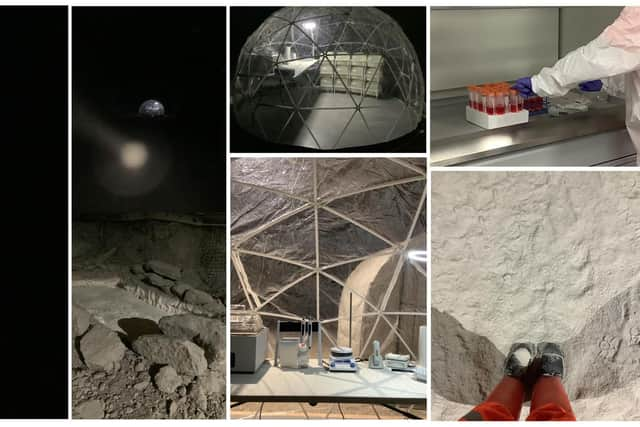The key to humans living on Mars could be found 1km under disused Yorkshire mine
Scientists have turned deep tunnels 1.1km under the countryside into an underground lab to investigate how scientific and medical operations would take place in challenging other-worldly environments.
Researchers at the University of Birmingham have launched the Bio-SPHERE (Biomedical Sub-surface Pod for Habitability and Extreme-environments Research in Expeditions) project in the research facility in one of the deepest mine sites in the UK.
Advertisement
Hide AdAdvertisement
Hide AdIt is the first of a series of new laboratory facilities planned to study how humans might work and stay healthy during long space missions, a key requirement for ensuring mission continuity on other planets.


The Bio-SPHERE project is based in a 3,000 cubic metre tunnel network which goes through 250-million-year-old rock salt deposits.
This geological environment, together with the deep subsurface location, have enabled researchers to recreate the operational conditions humans would experience working in similar caverns on the Moon and Mars.
This includes remoteness, limited access to new materials and challenges in moving heavy equipment around.
Advertisement
Hide AdAdvertisement
Hide AdThanks to the ultra-low radiation environment provided by the depth, the location will enable scientists to investigate how effective underground habitats might be in protecting space crews from deep-space radiation.
This could be a significant risk in space exploration, as well as other hazards, such as falling debris from meteorites, which risks damaging the life-support infrastructure.
Lead researcher Dr Alexandra Iordachescu, in the University of Birmingham’s School of Chemical Engineering, said: “This new capability will help to gather information that can advise on the life support systems, devices and biomaterials which could be used in medical emergencies and tissue repair following damage in deep-space missions.
“These types of metrics can guide system design and help to assess the scientific needs and acceptable timeframes in bioengineering operations under the constraints of isolated environments, such as space habitats.
Advertisement
Hide AdAdvertisement
Hide Ad"The data is likely to bring numerous benefits for Earth-based applications as well, such as delivering biomedical interventions in remote areas or in hazardous environments and more generally, understanding biomedical workflows in these non-ideal environments.”
The first facility to be opened as part of Bio-SPHERE , is based in a three metre wide simulation module and is designed specifically to test biomedical procedures needed to prepare materials for treating tissue damage.
These include complex fluids, polymers and hydrogels for regenerative medicine that could be used, for example, in wound dressings, or fillers for damage mitigation.
This environment provides the opportunity to simulate various mission scenarios and to conduct cutting edge, interdisciplinary science.